TOM WAITS LIKE A SONG-NOIR AMONG THE BOOKS
TOM WAITS to be re-visited
by Norman Warwick
Sometimes their articles are almost forensic autobiographies, and sometimes their articles home in on the seminal song by an artis, or a key change of direction in teir career. These excellent music journalists never fall into the trap of what Wordsworth called ´murder to dissect, and whilst they place songs and artists in the social context of their time and analyse the meaning of songs, often giving us various explanations and theories their appreciation of the music and lyrics always shines through. Their obvious love of an artist and / or his or her music has often driven me to find some of that artist´s work and have even occasionally made me totally re-evaluate my own thoughts on an artis and his career. Recent postings by these guys (and girls) on the passing of Jimmy Buffett certainly gave me a greater understanding of the parrot-head culture that surrounded the work of Jimmy Buffet. I realised that, by extrapolating four or five of his great songs for my playlists that I had pretty much disregarded the good-time lement of his work. Now I have read an article at Paste magazine on line, for it there that a whole bureau of great writers hang out, by Matt Melis, that has even added to my great appreciation of Tom Waits. I have always loved his gentler songs, though, rather than his frentic fairground-barker routines. The opening sentences of Matt´s article reminded me that had been re-miss of me me.
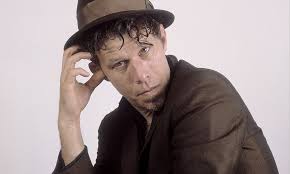
Tom Waits (left) contains multitudes´, .he began and then went on to explain what he means by that.
That statement will come as no surprise to anyone who has ever laid down small change for one of his records or caught one of his enigmatic late-night appearances. He’s spent a cup of coffee as a San Diego folkie, moonlit as an inebriated lounge act and scrapped and salvaged as a beat-boxing junkman. He’s served as a cinematic muse to auteurs like Francis Ford Coppola, Terry Gilliam and Jim Jarmusch; perched as a songbird in the ear of everyone from Bette Midler and Rod Stewart to Tori Amos and Scarlett Johansson.

There was also a sea shanty with Keith Richards (shown right with Waits) in there somewhere, for those keeping score at home. It’s not the typical rap sheet for the son of middle-class school teachers from a small burg outside of Los Angeles.
Perhaps, most surprising then is that Waits’ eclectic career somehow seems to make sense when looking back across the scope of five-plus decades in the music business. His evolution has been less a series of seismic shifts or sea changes between albums (and personas) and more akin to a subtle set of permutations of what came prior—mixed with elements of where the artist had set his sights next. Consequently, Tom Waits never sounds quite the same way twice—and yet, he always still registers unmistakably as Tom Waits.

And it would be just that simple if not for 1983’s Swordfishtrombones, the punctuating, head-scratching, nightmarish outlier of a record that turned everything listeners thought they knew about Tom Waits the artist on its confetti-covered head.
Now, 40 years later, Swordfishtrombones boldly hangs mounted within Waits’ discography as the departure point for his transformation into the experimental tunesmith and avant-garde performer fans recognize and revere today.
By the early 1980s, Waits had settled into a comfortable niche on the Asylum label. He’d already made a half-dozen albums alongside producer Bones Howe, exploring every corner, ashtray and toilet you might find in a jazz club or its alley out back. Those collaborations included Small Change, one of the funniest and most brutally poignant musical meditations ever on life once the bottle starts gaining on you. But those songs and the lifestyle that fermented them had worn thin for Waits. He sounded bored to gin-soaked tears on One from the Heart, the 1982 Oscar-nominated soundtrack he composed and recorded with Crystal Gayle for friend and director Francis Ford Coppola. It’s an affair as watered down as a cheap drink left melting all night on a hot barroom jukebox and flickers like a neon sign telling Waits that, creatively speaking, this might have been last call and near closing time for his current act.

Waits amicably parted ways with Howe following One from the Heart. More importantly, he had met future wife and longtime collaborator Kathleen Brennan on the film’s set. Waits has credited Brennan (shown right with Elvis Costello) several times over the years as the force who nudged him towards the next (and his most definitive) creative harvest. He once, jokingly, told David Letterman that Brennan is the “broad” that “broadened” his songwriting. Today, fans know her as a co-writer and co-producer across several of Waits’ most beloved projects.

Among her earliest influences on Waits, she turned him on to the madcap music of Captain Beefheart (left) , whose strange imprint can be found all over the experimental compositions and vocal stylings of Swordfishtrombones. With Brennan now in his creative corner, Waits was on the brink of taking a sledgehammer (or at least a marimba mallet) to both the guise and persona he had spent nearly 10 years slowly building a successful career upon.
Swordfishtrombones often gets counted as the one that got away from Asylum; more accurately, though, the record label threw it back—and it’s hard to blame them. Gone was the familiar, raspy jazz crooning; gone were the saxophones and Waits’ signature piano fare. And maybe most damningly, there was a stark absence of the romantic, Kerouacian language of Waits sharing a bottle from a paper bag and dragging listeners through his usual late-night haunts. The first two minutes of the album (“Underground”) sound nothing like an Asylum Tom Waits record. The song sinisterly slouches along to plodding bass marimba and a baritone horn, as Waits barks (or belches) about a shadow world tethered beneath us. This is not a search for the heart of Saturday night—to say the very least. It’s dark, abrasive and unnerving, and that’s just the initial descent into the belly of Swordfishtrombones. When Asylum declined to put out such an anomalous album, Island Records brought Waits aboard and began a decade-long partnership that would, largely, come to define the artist for future generations of listeners.
It’s forgivable to get caught up in just how different Swordfishtrombones sounds compared to Waits’ jazz-oriented albums. To listen to him talk about smashing automotive brake drums with a rock (“16 Shells From a Thirty-Ought-Six”) or to hear the Hammond B-3 organ on instrumental “Dave the Butcher” sound like a possessed and demented carnival calliope stalking its prey can definitely suck the air out of a conversation. What might go amiss, though, is the painstaking care Waits puts into these objectively odd and seemingly primitive instrumental decisions. On “16 Shells,” the use of brake drum, bell plate and snare makes the hypnotic clanker sound like a chain gang pounding rocks along the roadside or, as seen in the concert film Big Time, a hammer being bashed against steam pipes in a hellish boiler room. About “Shore Leave,” Waits spoke of using a low trombone, metal aunglongs and rice on a bass drum to conjure the sounds of passing traffic, tin cans blowing in the wind and waves meeting the shore, respectively. The effect allows the listener to breathe in the salty Hong Kong air and feel the dampness of the evening as an enlisted man on shore-leave pines for his love back home.
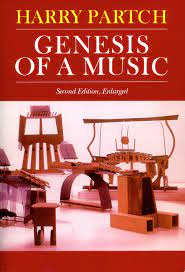
In addition to Captain Beefheart, Waits drew inspiration from composer Harry Partch, author of the book Genesis Of Music, publoished by Cape who often pieced together his own instruments from items at hand to suit his unique tunings. That ingenuity also sits at the heart of Swordfishtrombones, Waits’ first self-produced project. It no longer seemed as though Waits was worried about writing songs that fit into any particular niche he had once carved out for himself; now, he was too busy scrambling to find instruments and effects to match all the nightmarish sounds and images concocted by his own imagination. On one end of the spectrum, Waits enrolled parade drums, trombones and cymbals to transform the daily annoyances and commotion of “In the Neighborhood” into a grand marching band procession stepping down the block. On a more sobering note, he turned to bagpipe, a freedom bell and harmonium on “Town with No Cheer,” choices that cue the listener to lament the dry death of a town rather than feel nostalgic like we do while listening to a more traditional piano number, say Blue Valentine’s “Kentucky Avenue.” And there’s a certifiably deranged irony to hearing that breezy organ play as Waits regales us with the tale of “Frank’s Wild Years” and how its protagonist torched his home with both his wife and chihuahua, Carlos, presumably asleep inside. He really didn’t like that dog.
Of course, no instrument—not even the piano—has ever been more crucial to Waits’ success than his own voice, and he finds no shortage of ways to employ it abrasively on Swordfishtrombones. There’s everything from the aforementioned mad-dog barking of “Underground” and clanging hollers on “16 Shells” to the Beefheart-conjuring grate of “Gin Soaked Boy” and jazzy carnival barking that drives the frantic “Down, Down, Down.” On “Shore Leave,” Waits shows how he can mold his voice to fit a song’s textures, shifting between a longing lover’s croon and a storytelling voice that sounds like steam rising from a wet sidewalk before finally trailing off into a screeching falsetto reminiscent of a banshee’s tortured wail. All of it feeds into the idea that how something sounds can often be more compelling than what’s actually said—that the feeling evoked has more of an impact than any explanation ever could.
Lost in the revelation that banging on things might sometimes be more satisfying than plinking away on the piano, it’s easy to overlook the quieter moments on Swordfishtrombones. It’s an album of chaos, not clutter, though—and Waits leaves us space to breathe and watch his odyssey unfold. He allowed the evening’s tendrils to untangle on “Just Another Sucker on the Vine,” harmonium wafting down the street in the warm night air. Similarly, the interplay between piano and glass harmonica imbued closing instrumental “Rainbirds” with a sense of unspoken resolution that feels like a bargain after such a wild ride. Forget the manufactured drama of sweeping strings and cinematic flourishes that had diluted some otherwise touching works on previous albums. Waits permitted moments to speak for themselves here. “Johnsburg, Illinois” lasts little more than a few soft exhales and a sigh, but we know exactly what Waits feels—as he recalls a girl whose name he once wrote on his arm next to his own. Most moving, though, remains “Soldier’s Things,” a garage sale that sees a veteran’s possessions spread out on a table, his medals for valor reduced to a dollar box along with neckties and cufflinks. On an album that regularly grabs us by the collar and shakes us to our senses, Waits saved the hardest blow for that understated moment, leaving us to fill in the story and emotions as he lists the final inventory of a man’s life.
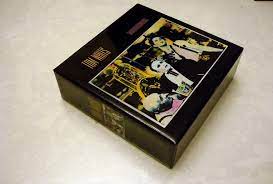
The album artwork of Swordfishtrombones likely tipped off some listeners that Waits had something radically different up his artistic sleeve. All of his album covers up until that point had placed him squarely in the world in which that particular collection of songs inhabited: leaning on a poolhall piano, dragging on a cigarette beneath a neon cocktail sign, perched backstage alongside a topless dancer at a seamy nightclub, etc. Even if fans didn’t recognize diminutive actor Angelo Rossitto or ex-wrestler Lee Kolima in Michael A. Russ’ TinTone artwork, they still would’ve noticed Waits depicted more like a vaudevillian or—maybe—a peasant in an Italian opera more so than a pianoman. Russ also directed the music video for single “In the Neighborhood,” the lone promotional video shot for the release. Despite Waits’ disdain for MTV and the rising medium, the video finds the artist not holding up a lamppost or chest-deep behind a piano with his hair tucked beneath a derby cap. Instead, front and center—doffing a top-hat and emphatically pumping his cane in the air—he leads a merry band of musical misfits down the street. Though he had incorporated props in his live act for years, this footage rings much closer to the avant-garde showmanship found in Big Time, throughout Waits’ work for the stage and in his performance pieces on future tours.
Swordfishtrombones marked only the beginning of Waits’ foray into a brave, new world of self-expression—a journey that would colour and inform his remaining Island years and beyond. We heard the hypnotic rhythms of Rain Dogs in the title track’s telltale groove and the rumblings of “Big Black Mariah” in the loping guitar of “Gin Soaked Boy.” In “Down, Down, Down,” we found the psychopathic spiritual predecessor to Frank’s Wild Years. And “Underground” grimly foreshadowed the hellscapes of Bone Machine while the madness of “Dave the Butcher,” and the rousing pomp of “In the Neighborhood,” fit creepily alongside the carnival chaos of The Black Rider. By the end of his run with Island Records a decade later, it was hard to imagine a time before Swordfishtrombones. Maybe Waits best sums up the success of his complete self-reinvention when he once joked that he’s now more likely to get recognized at the city dump than in the piano section of a music store. And, 40 years later, that still seems to sit just fine with him.
acknowledgements
The primary sources for this piece was written for the print and on line media Authors and Titles have been attributed in our text wherever possible
Matt Melis is a Pittsburgh native who has spent the last two decades writing about music, film, life, and where the three cross paths. When not writing about the arts, he writes fiction and spends time in Chicago with his fiancée, puppy and cat. He’s currently working on a book about one of his favorite albums.
Images employed have been taken from on line sites only where categorised as images free to use.
For a more comprehensive detail of our attribution policy see our for reference only post on 7th April 2023 entitled Aspirations And Attributions.
A SONG NOIR AMONG THE BOOKS
a bigger bookshelf needed by Norman Warwick
Today´s recommended read is ´a gritty, smoke-filled, and boozy account´ of musician Tom Waits’s formative decade in Los Angeles.

Song Noir examines the formative first decade of Tom Waits’ (left) career, when he lived, wrote, and recorded nine albums in Los Angeles: from his soft, folk-inflected debut, Closing Time in 1973, to the abrasive, surreal Swordfishtrombones in 1983.

Starting his song-writing career in the seventies, Waits absorbed Los Angeles’ wealth of cultural influences. Combining the spoken idioms of writers like Kerouac and Bukowski (right) with jazz-blues rhythms, he explored the city’s literary and film noir traditions to create hallucinatory dreamscapes. Waits mined a rich seam of the city’s low-life locations and characters, letting the place feed his dark imagination. Mixing the domestic with the mythic, Waits turned quotidian, autobiographical details into something more disturbing and emblematic, a vision of Los Angeles as the warped, narcotic heart of his nocturnal explorations.

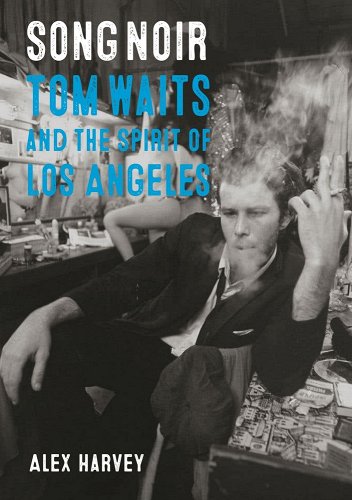
Title Song Noir
Author Alex Harvey
Price $13.95
Publisher Reaktion Books
Publish Date September 07, 2022
Pages 240
Dimensions 5.7 X 8.2 X 0.8 inches | 0.7 pounds
Language English
type Paperback
EAN/UPC 9781789146639
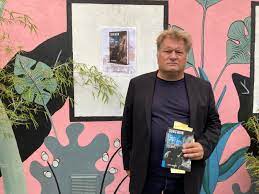
Author Alex Harvey (right) is a producer and director of programs including Panorama and The Late Showfor the BBC. His films include The Lives of Animals and Enter the Jungle. Based in Los Angeles, he regularly writes on literature, film, and music for the London Review of Books and Los Angeles Review of Books.




Leave a Reply
Want to join the discussion?Feel free to contribute!